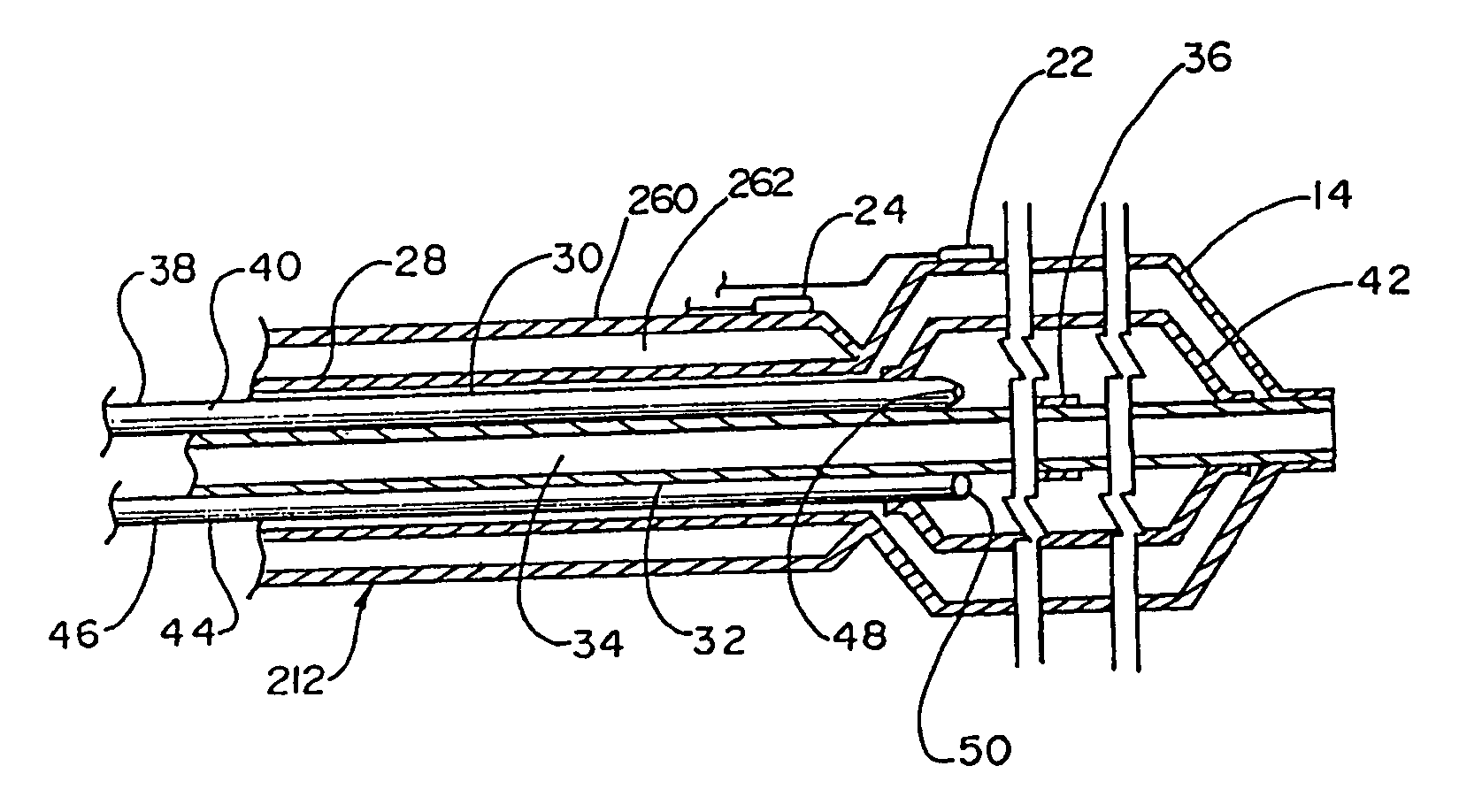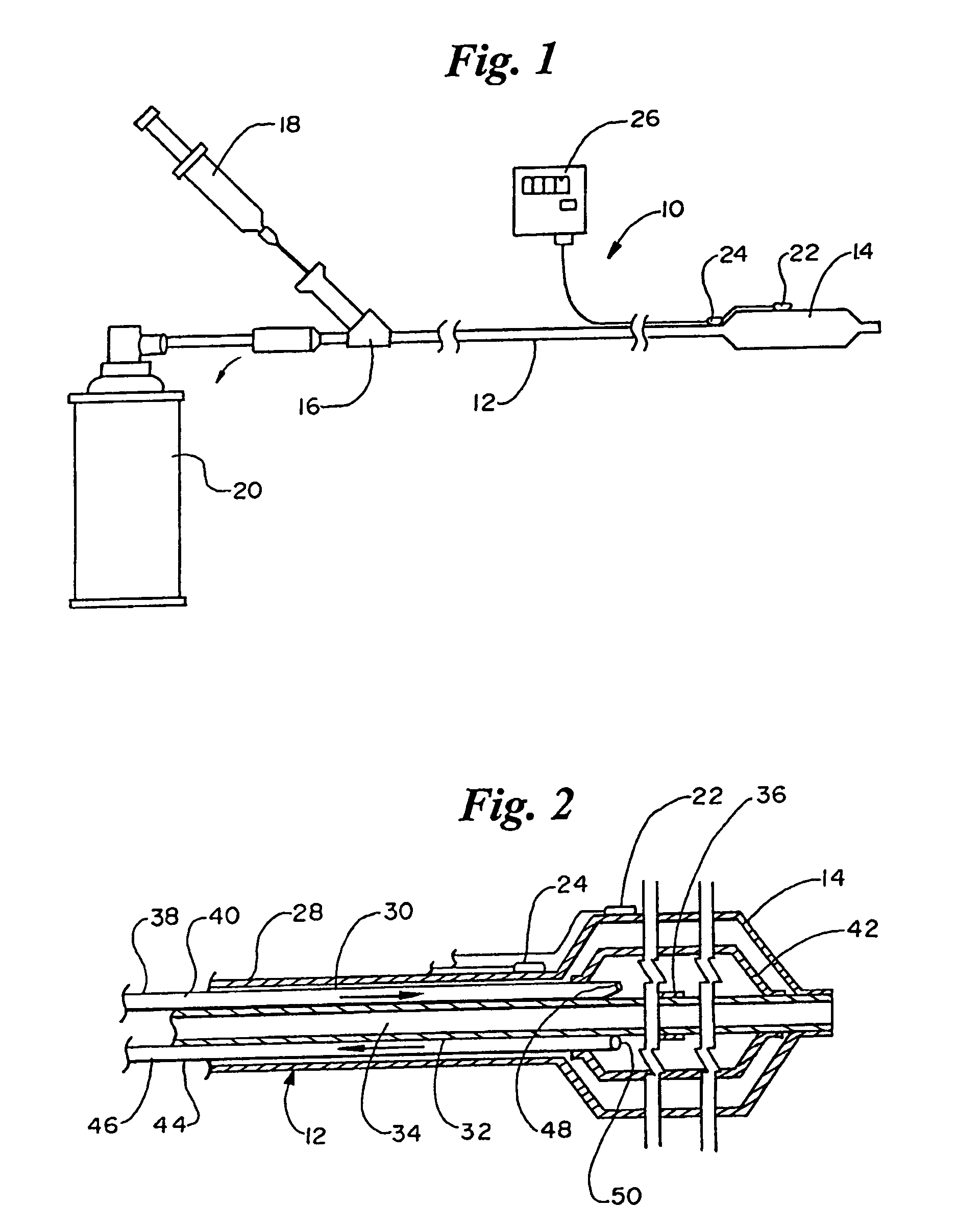Cryoplasty device and method
a technology of cryoplasty and artery wall, which is applied in the field of angioplasty, can solve the problems of irritating the wall of the artery in which they are implanted, affecting the effect of angioplasty, so as to achieve the effect of improving
- Summary
- Abstract
- Description
- Claims
- Application Information
AI Technical Summary
Benefits of technology
Problems solved by technology
Method used
Image
Examples
Embodiment Construction
[0016]Referring now to the drawings wherein like reference numerals refer to like elements throughout the several views, FIG. 1 is a side view of a cryoplasty catheter 10 in accordance with the present invention. Shaft 12 has a proximal end and a distal end. A dilatation balloon 14 is disposed at the distal end of shaft 12. At the proximal end of shaft 12 is a manifold 16. Connected to manifold 16 is a pump 18, which can be hand pumped for inflating balloon 14. A coolant source 20 is also connected to manifold 16 which, as explained below, provides a supply of coolant to balloon 14. Catheter 10 can be provided with a thermo-resistive temperature sensor 22 for monitoring the temperature of a lesion and a thermo-resistive control sensor 24 connected to a monitor 26.
[0017]FIG. 2 is a longitudinal, cross-sectional view of the distal end of catheter 10 including the distal end of shaft 12 and balloon 14. Shaft 12 includes an outer tube 28 which defines an inflation lumen 30 in fluid comm...
PUM
| Property | Measurement | Unit |
|---|---|---|
| temperature | aaaaa | aaaaa |
| temperature | aaaaa | aaaaa |
| diameter | aaaaa | aaaaa |
Abstract
Description
Claims
Application Information
 Login to View More
Login to View More - R&D
- Intellectual Property
- Life Sciences
- Materials
- Tech Scout
- Unparalleled Data Quality
- Higher Quality Content
- 60% Fewer Hallucinations
Browse by: Latest US Patents, China's latest patents, Technical Efficacy Thesaurus, Application Domain, Technology Topic, Popular Technical Reports.
© 2025 PatSnap. All rights reserved.Legal|Privacy policy|Modern Slavery Act Transparency Statement|Sitemap|About US| Contact US: help@patsnap.com



